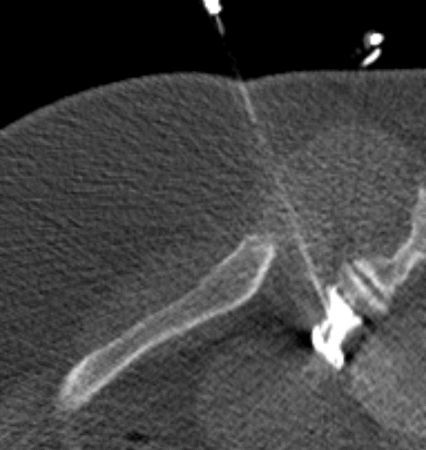PRT CT

Periradicular pain therapy (PRT) treats back pain through the targeted application of medication to the nerve root. The nerve root can be compressed and irritated by a stimulus (e.g. herniated disc).
With the help of a CT-guided puncture at the level of the lumbar spine, it is possible to place a drug mixture of cortisone and a local anesthetic through a narrow needle at the nerve root. A PRT at the level of the cervical spine is only carried out by applying cortisone.
The active ingredients lead to reduced swelling and direct pain treatment. The outpatient procedure can be repeated after about 3 weeks. Indications are often herniated discs or other causes of nerve irritation.
A detailed personal discussion as well as a thorough explanation of the risks and side effects is offered at a separate appointment in the run-up to the PRT. Here it is important that a current MRI examination of your spine is available. In the combination of MRI images and your exact pain symptoms, the indication for PRT is made.
Is the treatment covered by statutory health insurance?
Your statutory health insurance company will cover the costs of PRT if you have been referred by a doctor with additional qualifications in "pain therapy". You can find out which doctors have this qualification from your Association of Statutory Health Insurance Physicians.
Without this transfer, billing as an individual optional service is also possible.